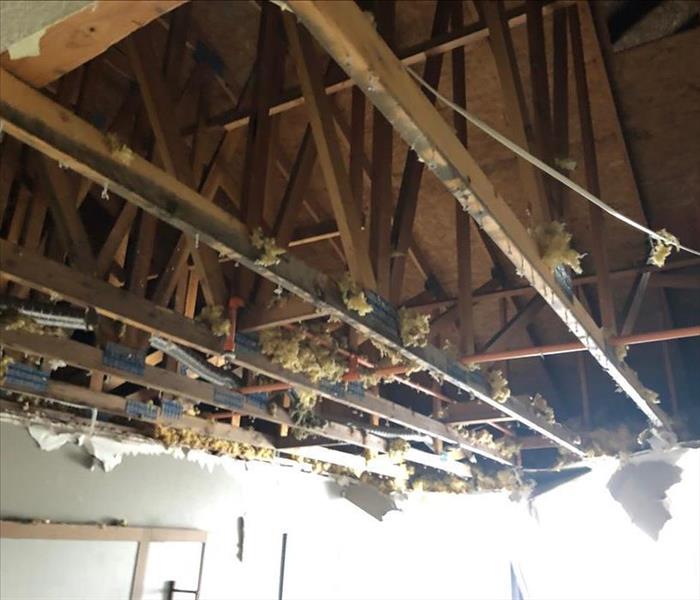Mold in Your Basement: Causes and Remediation Strategies
11/13/2024 (Permalink)
 By understanding the causes of mold in your basement and applying the right remediation strategies, you can protect your property from damage.
By understanding the causes of mold in your basement and applying the right remediation strategies, you can protect your property from damage.
Mold growth in basements is a common problem that can lead to significant property damage if left untreated. Understanding the causes of basement mold and knowing effective remediation strategies are essential for homeowners looking to protect their homes. In this blog, we’ll provide expert insights into the most common causes of basement mold and offer proven strategies for removing and preventing it.
Causes of Mold in Your Basement
Basements are particularly vulnerable to mold because of their damp, cool environment. Here are the key causes of mold growth in basements:
- Moisture Intrusion: Water leaks from cracked foundations, poor drainage, or even plumbing issues can introduce moisture into your basement. Mold thrives in moist environments, making it essential to address any water intrusion immediately.
- High Humidity Levels: Mold can begin to grow in areas where humidity levels are above 60%. Basements often have poor ventilation, which can lead to a buildup of humidity and condensation, creating an ideal environment for mold to flourish.
- Inadequate Ventilation: A lack of proper airflow prevents moisture from escaping the basement. This trapped moisture leads to damp surfaces that mold spores can easily attach to and grow on.
- Organic Materials: Mold needs organic material to grow, and basements often contain items like wood, drywall, and cardboard that provide a perfect food source for mold spores.
Mold Remediation Strategies
If mold is found in your basement, taking immediate action is crucial. Here are effective remediation strategies to address and prevent mold:
- Fix Water Leaks: The first step in mold remediation is to stop the source of moisture. Inspect your basement for any cracks, leaks, or water infiltration points and repair them immediately.
- Control Humidity: Use a dehumidifier to maintain a humidity level below 50% in your basement. This will make the environment less hospitable for mold growth.
- Improve Ventilation: Increase airflow in your basement by installing vents or fans. Proper ventilation helps reduce moisture buildup, limiting the potential for mold growth.
- Remove and Replace Affected Materials: If mold has grown on porous materials like drywall or insulation, it’s often best to remove and replace them. Cleaning mold from non-porous surfaces with a mold-specific cleaner is also effective.
- Professional Mold Remediation: For extensive mold infestations, it's recommended to consult professionals. According to the Environmental Protection Agency (EPA), mold problems larger than 10 square feet should be handled by professionals EPA Mold Remediation Guidelines.
Preventing Future Mold Growth
To prevent mold from returning, conduct regular basement inspections, ensure proper drainage, and maintain controlled humidity levels. Installing a sump pump and addressing any foundation cracks will further help keep your basement mold-free.
By understanding the causes of mold in your basement and applying the right remediation strategies, you can protect your property from the damaging effects of mold. If you need expert help, SERVPRO® of St. George is here to provide professional mold remediation services to keep your home safe and dry.






 24/7 Emergency Service
24/7 Emergency Service